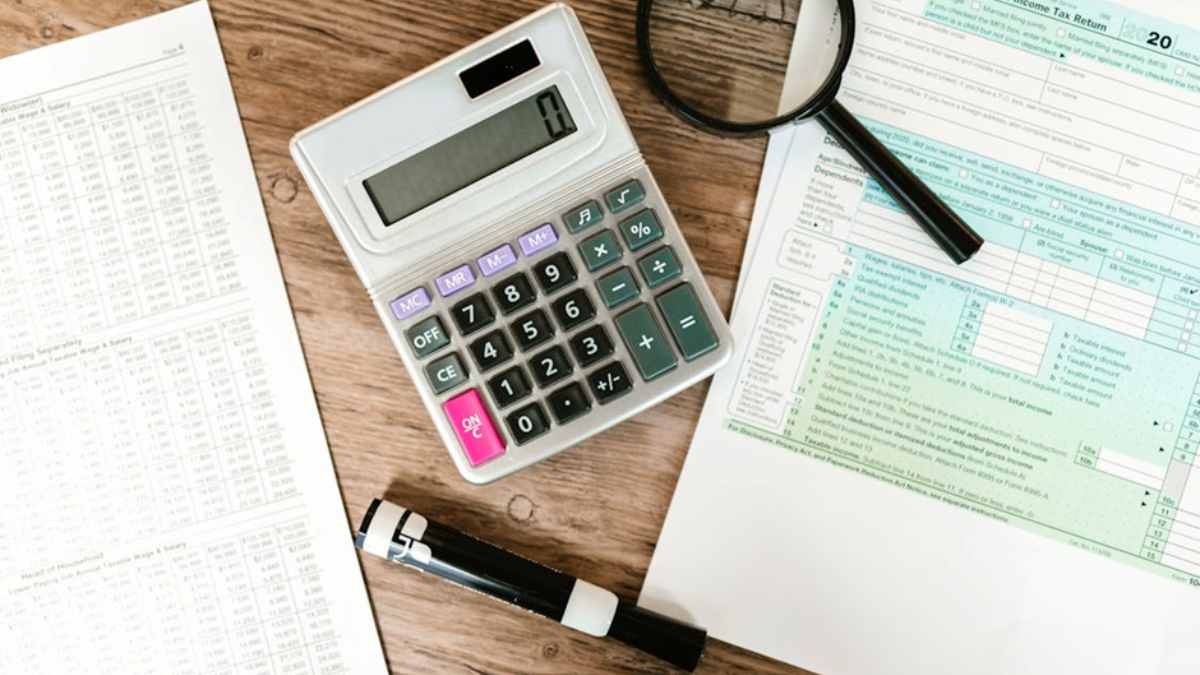FINANCE
Short Term Loans: Fast Cash For Urgent Needs

In today’s dynamic economic climate, you may be in need of financial aid at a moment’s notice. Unexpected expenses such as medical emergencies, urgent car repairs, or sudden home fixes can become monumental uphill tasks when cash flow is tight. In these instances, it’s comforting to know you can turn to short term loans UK. These could offer a financial lifeline, providing quick cash for that pressing need. But what exactly are these short-term loans? Let’s delve in and discover.
Understanding Short-Term Loans
Short-term loans, as suggested by the name, are loans that are intended to be repaid over a short period. Typically, the repayment period varies from a few months to a year, making them an ideal solution for urgent needs. It’s important to note that, like any other type of loans, short-term loans should be managed responsibly to avoid falling into debt traps.
The Advantages of Short-Term Loans
Short-term loans offer a number of benefits to borrowers. The principal advantage being speed; they can typically be approved within hours and the funds disbursed within a day. This can be a lifesaver in case of emergencies where obtaining cash quickly is of utmost importance.
Furthermore, these loans are often less comprehensive in their needs for approval, requiring fewer paperwork and checks compared to traditional forms of credit. As a result, even individuals with a less than perfect credit history have a chance at securing a short-term loan, making it an accessible form of credit to a vast array of individuals.
How to Choose Short-Term Loans
As with every financial decision, choosing a short-term loan provider requires careful consideration and research. Firstly, it is critical to understand your own financial needs and capacity for repayment. Always ensure that the repayment terms are manageable for your unique financial situation.
Next, consider interest rates and additional charges. Not all loan providers are the same, and costs can vary widely from one loan product to another. It’s crucial to fully comprehend the total repayment sum, taking into account both the principal and the interest.
Additionally, consider the reputation and transparency of the loan provider. Select a provider who is upfront about all the fees and charges associated with the loan. They must also have a strong reputation for good customer service.
Conclusion
Short-term loans provide an excellent solution for those faced with unexpected expenses or financial emergencies. They offer a speedy and often more accessible alternative to traditional forms of credit. However, as with any financial product, it is crucial to approach with caution, ensuring you fully understand the terms of the loan and your capability to repay. Always remember, responsible borrowing is key.
FINANCE
How Do Forensic Accountants Investigate

How Do Forensic Accountants Investigate
Many people believe accounting is a boring career where you are trapped in a room going through financial documents all day. The reality, however, couldn’t be further from this. Although accounting involves working with financial records, some accounting careers, such as forensic accounting, are super exciting. You will analyze financial documents all the time, but you will mostly work with cases of fraud, embezzlement, and financial disputes, sometimes leading to involvement in forensic accounting litigation.
What Is Forensic Accounting?
According to the experienced forensic accountants at Rocky Mountain Advisory, forensic accounting is a specialized field of accounting that uses accounting, auditing, and investigative skills to examine financial statements and transactions. Its primary purpose is to detect, investigate, and prevent financial fraud and misconduct.
Think of forensic accountants as financial detectives who can work on criminal and civil investigations. In criminal cases, forensic accountants work closely with law enforcement agencies to uncover fraudulent schemes or financial crimes. In civil cases, they assist in resolving disputes related to financial misrepresentation, breach of contract, or valuation issues. For instance, in divorce cases, one party may hide assets by transferring properties or valuable items to trusted family members or friends before a divorce. This means the other party will get less than they are entitled to. The aggrieved party can hire a forensic accounting consultant to investigate and present evidence in court.
What Is a Forensic Accountant
A forensic accountant is a highly trained professional specializing in investigating and analyzing financial data to uncover evidence of fraud, financial mismanagement or other forms of economic crime. These professionals are certified public accountants (CPAs), but with additional credentials in forensic accounting, such as Certified Fraud Examiner (CFE) or Certified in Financial Forensics (CFF) designation.
A forensic accountant’s job is more demanding than a regular accounting job. They look beyond just the numbers. They examine financial documents for signs of fraud, because in many cases, those who commit fraud cover their tracks. The experienced forensic accountants at Rocky Mountain Advisory are skilled at identifying these hidden red flags to unravel complex financial schemes.
How Do Forensic Accountants Investigate
Forensic accountants combine their accounting expertise with investigative techniques to uncover financial irregularities. The investigation process involves the following steps.
1. Initial assessment and planning
This involves meeting with the party seeking forensic accounting services to understand the nature of the financial issue. After that, they gather relevant documents and use the information to develop an investigation plan.
2. Data collection
The next step is to collect financial and non-financial data, such as financial statements, bank records, receipts, invoices, emails and contracts. They will also interview key personnel for additional insights.
3. Data analysis
The next step is to analyze the information. These professionals will follow the money flow through various accounts to identify any unexplained discrepancies and unusual patterns, such as large cash withdrawals or transfers to offshore accounts. They’ll use financial ratios to assess the health of the business and identify any signs of financial distress or manipulation.
4. Report of findings
After completing the analysis, the forensic accountants prepare a detailed report of their findings which will include:
· Evidence gathered
· Method used in the investigation
· Conclusion from the analysis
In cases where the investigation leads to legal action, the forensic accountants will be called to give testimony in court.
5. Preventive recommendations
Based on their findings, they will recommend measures to prevent such occurrences in the future.
Conclusion
Forensic accounting is an exciting career that allows you to work in legal and corporate settings. The job requires a keen eye for detail to uncover hidden financial data. The experienced forensic accountants at Rocky Mountain Advisory can help uncover hidden fraud, assist in complex litigation and provide valuable insights that help bring financial wrongdoers to justice.
FINANCE
Instant Loan Approval: What You Need to Know Before Applying

Instant loans have become a popular option for people who need quick access to cash. Whether it’s for an unexpected bill, a medical emergency, or an urgent repair, instant loans provide a fast solution when time is of the essence. However, before diving into the application process, there are several important things you need to understand. In this article, we’ll explore what you need to know before applying for an instant loan to help you make an informed decision.
- Eligibility Criteria
While instant loans are known for their fast approval, lenders still have criteria that borrowers must meet. The requirements for instant loans are typically less stringent than for traditional loans, making them accessible to a wider range of people. However, each lender may have slightly different eligibility standards.
Common eligibility requirements include:
- Being at least 18 years old
- Having a regular source of income
- Holding a valid bank account
- Providing proof of identity and residence
Even if you have a poor credit score, many lenders are willing to approve instant loans because they often focus more on your current income than your credit history.
- Understanding Interest Rates and Fees
One of the biggest factors to consider before applying for an instant loan is the interest rate. Instant loans typically come with higher interest rates compared to traditional loans, as they are designed for short-term borrowing and lenders take on higher risks when offering them to people with lower credit scores.
In addition to the interest rate, you should also be aware of any fees associated with the loan, such as:
- Processing fees: Some lenders may charge a fee for processing the loan application.
- Late payment fees: If you fail to make your repayment on time, you could be charged a penalty.
- Prepayment fees: Some lenders charge fees if you repay the loan early.
What you should know:
Before applying for an instant loan, calculate the total cost, including interest and fees. It’s important to make sure you’re fully aware of how much you’ll need to repay and that you’re comfortable with the repayment terms.
- Speed of Approval and Funding
The primary appeal of instant loans is their fast approval process. In most cases, the application can be completed online, and you can receive approval within minutes. Once approved, the funds are typically deposited directly into your bank account, often within a few hours or by the next business day.
What you should know:
While the process is fast, ensure that the lender you choose is transparent about the approval timeline. Some lenders may advertise “instant approval” but take longer to deposit the funds. Always check the lender’s reputation and reviews to confirm their processing time before applying, especially if you’re in a financial emergency.
- Loan Amount and Repayment Period
Instant loans are usually designed for smaller amounts, often ranging from £100 to £1,000, depending on the lender. These loans are typically repaid over a short period of time, usually within a few weeks to a few months. This means that while the loan can provide quick relief, it also comes with the pressure of a swift repayment.
What you should know:
Before applying, make sure the loan amount fits your needs, but also ensure you’ll be able to repay it within the given timeframe. Failing to repay on time could result in additional fees and a negative impact on your credit score.
Final Thoughts
Instant loans can provide a quick solution for urgent financial needs, but they are not without risks. Before applying, make sure you understand the loan’s terms, including interest rates, fees, and repayment periods. Choose a reputable lender and ensure you have a clear repayment strategy to avoid falling into debt. By taking the time to review all your options and being mindful of the potential pitfalls, you can use an instant loan responsibly and avoid unnecessary financial stress.
When used correctly, instant loans can be a helpful tool, but they should be approached with caution and careful planning. Always make sure the loan you’re applying for aligns with your financial situation and long-term goals.
FINANCE
Crafting Meaningful Connections: The Art of Custom Challenge Coins

Introduction to Custom Challenge Coins
Custom challenge coins have established themselves as a remarkable means of building connections and expressing sentiments across military and civilian landscapes. Though small, these solid medallions carry significant weight in terms of emotional and symbolic power. As they gain popularity, especially in sectors looking to enhance team spirit or brand ethos, custom challenge coins are becoming essential tools for organizations aiming to cement their core values and celebrate achievements distinctively. They offer a unique blend of tradition and modernity, embedding messages in an art form that feels personal and prestigious.
The allure of challenge coins lies in their ability to transcend mere trinkets and turn them into treasures reflecting personal or group accomplishments. Organizations and groups adopt these tokens to signify unique benchmarks, contributing to an evolving story of value and tradition. Understanding these coins’ aesthetical and functional allure opens up a world of untapped potential for engaging and resonating deeply with people.
The Historical Significance
The history of these coins is as rich as it is fascinating. Originating within military ranks, challenge coins were reportedly first used during World War I as a form of identification and camaraderie among troops. Each coin, embedded with specific insignia, served not only as a means of communication but also as a morale booster for soldiers, reminding them of their shared mission and comradeship. The transformation of these coins from military use to broader civilian applications illustrates their underlying ethos—strength through unity and recognition.
As chronicled in a detailed history, diverse groups have embraced challenge coins, from governmental bodies to non-profit organizations. Their emblematic nature continues to provide a sense of identity and belonging, vital for groups aiming to harness cohesion and enduring commitment.
Customization: Making It Personal
The allure of challenge coins is amplified when they are customized. They no longer serve a generic purpose; each coin becomes a canvas for personal and organizational storytelling. Tailored color schemes, inscriptions, emblems, and shapes offer deeper meaning, marking milestones unique to the individual or the collective they represent. When people hold a customized coin, they have a piece of history, personal stories, and collective achievements forged into metal.
Each customization decision—from a specific choice of color to the intricacies of the emblem design—carries intent and symbolic meaning, rendering the coin a valuable keepsake. Such personalization is both a creative journey and an opportunity to leave a legacy imprinted in metal.
The Symbolism Behind the Coin
At the heart of each challenge coin lies its symbolism. The images and words engraved on these coins encapsulate rich stories, emotions, and ideals that transcend the physical object. Symbols on coins can commemorate a battle won, a goal achieved, or an individual whose spirit drives a team’s success. The potent blend of imagery and text transforms these coins into nuanced storytelling devices, encapsulating messages in a way that no oral or written medium can quite capture.
Given their symbolic heft, challenge coins can serve as touchstones, reconnecting the holder to shared traditions, values, or moments of triumph. These coins are small yet mighty vessels of memory and meaning.
Design Elements: From Concept to Creation
Creating a challenge coin is both an art and a science. What begins as a concept must be honed through design elements carefully considered for aesthetic appeal and thematic resonance. Various stages in coin design—from selecting images to choosing materials that align with brand ethos—result in meticulous, durable, and artistically pleasing creations.
Modern minting processes allow for exquisite detail and vibrant color application thanks to advances in design elements and technologies. This technological innovation enables coins to function as commemorative and holdable art pieces.
Unique Uses Across Different Sectors
Beyond traditional ceremonial roles within the military, challenge coins have found varied applications across numerous sectors. Within businesses, they are used to recognize milestone achievements or express gratitude, fostering a sense of camaraderie and team spirit. Educational institutions utilize challenge coins to mark graduations and academic achievements, providing students with tangible symbols of success and hard work.
Moreover, community organizations leverage these coins to create lasting connections among members, using them as tokens of appreciation for volunteer efforts or as symbols of solidarity in joint ventures. The adaptability of challenge coins ensures their relevance in various contexts, making them suitable for any occasion that calls for recognition and remembrance.
Stories of Impact and Recognition
The stories surrounding challenge coins are as diverse as their uses. Among the most powerful are personal narratives of how these coins have impacted the individuals who receive them. For some, a challenge coin serves as an ongoing reminder of personal accomplishment, while for others, it highlights their contributions to a collective goal. These narratives underscore the emotional resonance that such a small object can possess.
In fields ranging from corporate environments to educational settings, these coins foster an atmosphere of recognition, connecting people through shared experiences. As anecdotes of these impacts demonstrate, challenge coins have a unique ability to transcend simple recognition, instead fostering deeper bonds and meaningful connections.
Conclusion: The Enduring Legacy of Challenge Coins
The legacy of challenge coins is robust and enduring. Though they may appear simple, these coins encapsulate profound meanings and foster connections that endure long after distribution. By symbolizing unity, achievement, and respect, challenge coins serve as lasting reminders of our shared history and the bonds that connect us.
As society continues to evolve, the timeless appeal of challenge coins remains. They reflect both historical traditions and modern sentiments. They continue to attest to their relevance and steadfast ability to unite people, foster pride, and inspire achievements.
-

 HEALTH5 months ago
HEALTH5 months agoIntegrating Semaglutide into Your Weight Loss Plan: A Practical Guide
-

 HOME IMPROVEMENT5 months ago
HOME IMPROVEMENT5 months agoHow to Choose the Perfect Neutral Area Rug for Every Room
-

 ENTERTAINMENT1 month ago
ENTERTAINMENT1 month agoInside a Coomer Party: A Closer Look at this Growing Trend
-

 CONSTRUCTION4 months ago
CONSTRUCTION4 months agoConstruction Site Safety Regulations in New York and Your Rights as a Worker
-

 LAW4 months ago
LAW4 months agoTeenage Drivers and Car Accidents in California: Risks and Parental Liability
-

 FASHION5 months ago
FASHION5 months ago7 Celebrity-Inspired Elegant Summer Dresses For 2024
-

 LAW4 months ago
LAW4 months agoGang Activity and Criminal Charges in CA: Protecting Your Rights
-

 LAW4 months ago
LAW4 months agoKentucky’s School Football: Concussions, Injuries, and Legal Options
